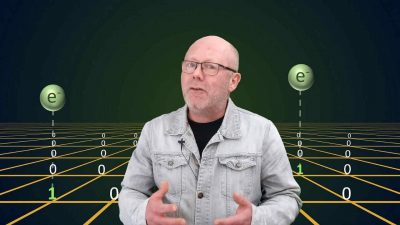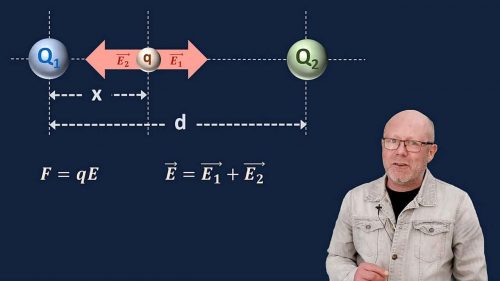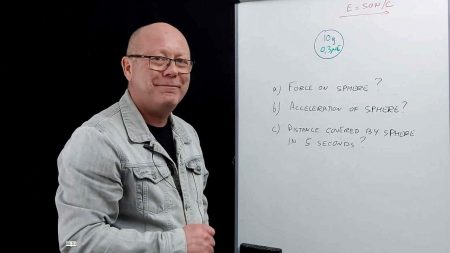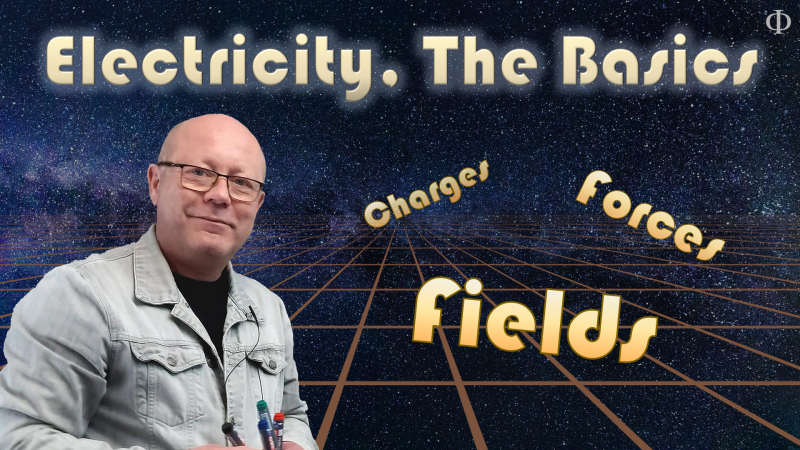Master the fundamental notions of Electricity

Are you struggling to understand electricity?
You find the concept of electric charge or electric field really abstract and when you look in your text book, you feel lost, maybe even, very lost!
Well, this course is your remedy!
The question you should ask yourself is: Why am I struggling?
If I look around, it appears that many people appear to manage this knowledge and build amazing tools with it: rockets and satellites, TVs and radios, computers and mobile phones, washing machines and electric cars… And all these devices are based on electrical sciences.
The answer is actually quite simple: you haven’t been taught the foundational concepts properly: What is an electric charge? How does an electric force come to be? And how can you calculate it or influence it? What is an electric field and how to use such a concept?

This is where the Course “Electricity, The Basics” comes in:
It provides you with answers to these questions, and poses the foundations onto which you can succeed with your studies of electrical sciences.
Structure of the course
Section 1, “Electric Charges”
This first step of your voyage towards understanding electricity begins by defining what a charge really is. Then, you learn how to quantify a charge, you learn about the principles of conservation of charge and discover how they interact with each other. At this point, you will realise that electricity, also known as electric current is a motion of charges, and understand why some materials conduct electricity and why others don’t.
Section 2, ”Electric Forces”
Then, it will be time for you to get familiar with the mathematical expression of the electric interaction between charges, Coulomb’s Force. You will learn about the parameters that impact the interaction between two charges (such as the magnitude of the charges, the distance between them and the environment in which the charges are located).
You just need one lesson for this before being exposed to a variety of training exercises that will teach you how to manipulate this equation and solve physics problems involving electric charges. The exercises are presented in increasing levels of difficulty.

Section 3, ”Electric Fields”
The concept of electric fields is a cornerstone of all topics related to electricity. This is why it is essential to understand what are electric fields, and feel comfortable when manipulating them. This is what this section is all about: You will be immersed in a journey deep into the foundations of electric fields.
The first video focuses on defining what a field is, and from there, it branches to the definition of an electric field. The 2 videos that follow describe in detail the cause and the effect of an electric field, by introducing the notion of electric field strength. These videos are followed by 3 exercise videos where you can apply this new knowledge directly. The last of these exercises show how Coulomb’s Law emerges naturally from the notion of electric fields.
The 4 lessons and exercise videos after that will teach you how to manipulate electric fields strengths as vectors. After viewing these 4 videos, you will be able to predict the motion of a charge placed in one or more electric fields.
This naturally leads to the concept of electric field lines in the next two videos, with a special focus on the two most common electric field geometries: radial fields and uniform fields.
The final video is an exam level exercise that centralizes all the notions presented in this section.
What you will gain by taking this course
If you follow this class till the end, and carry out all the exercises diligently, you will gain more than just the ability to solve simple high school questions.
By doing so, you will build or rebuild a solid foundation on which you can count on when approaching more advanced electrical sciences, like circuits, capacitance, or electromagnetic induction.

See this course as an opportunity to revisit your understanding of the basics of electricity and reinforce your capacity to successfully study more advanced topics, with a sense of enjoyment and serenity
Level of this course
This course is of high school level, from grade 10 for the 1st section (electric charges) up to the diploma years for the last section (electric fields). This makes it an ideal tool as support for the lessons you get at school, and to prepare any high school diplomas in Physics, like for example IB Physics, A-Level Physics, AP Physics etc.
It is also a great tool for University students and engineers to revisit the vary basics of electricity. As a researcher myself, I realized that refreshing the basics does bring new perspectives!


Detailed content
Section 1: Electric Charges
- Introduction
- What is a charge
- Quantifying a charge.
- Conservation of charge.
- Interactions between charges.
- Electric currents
- Conductors and insulators.
- Static electricity magic: the aluminium can
- Static electricity magic: the soap bubble
- Full definition of an electric charge
- Electric charges – quiz video
Section 2: Coulomb’s Law (Electric Forces)
- Introduction
- Lesson: Coulomb’s Law
- Exercise 1 – Direct application of Coulomb’s Law
- Exercise 2 – Position of balance between two charges
- Exercise 3 – Coulomb’s law in 2 Dimensions
- Exercise 4 – Exam level Problem
Section 3: Electric Fields
- Introduction
- What is an electric field?
- Electric field strength (part 1)
- Electric field strength (part 2)
- Exercise 1 – Charged sphere in an electric field
- Exercise 2 – Electric field of a proton in an hydrogen atom
- Exercise 3 – Deriving Coulomb’s Law from electric fields.
- Electric field strength vectors in 1D
- Exercise 4 – Position of balance between 2 electric charges
- Electric field strength vectors in 2D
- Exercise 5 – Multiple electric fields in 2 dimensions.
- Electric field lines
- Radial & uniform fields
- Exercise 6 – Motion of a charge between two charged parallel plates (exam level exercises

